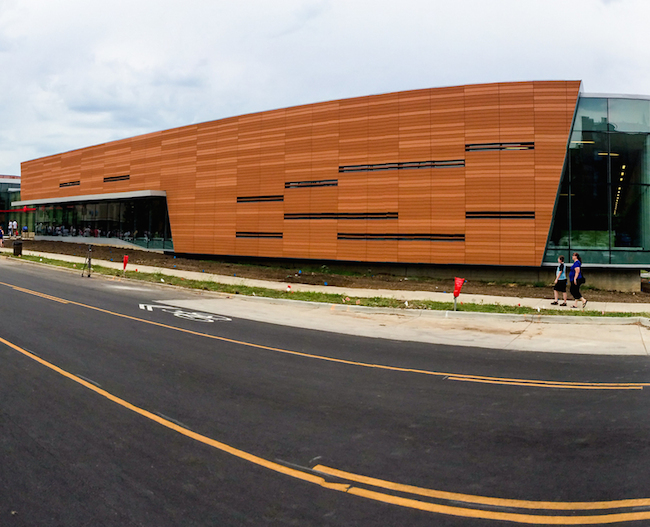LAWRENCE, Kansas — Gould Evans added something we haven’t seen yet in a description of a building project: data as evidence of the success of the work.
The city of Lawrence wanted to update their library from 1976. They wanted a complete overhaul, turning the space from a repository for books into a “multimedia community hub.” Gould Evans, which is based in Lawrence, was tapped to renovate the library’s 40-year-old brutalist exterior, because nothing says “community” less than an unfeeling crag of brutalism. We’re on the record with our enthusiasm for brutalist architecture, but we wouldn’t use it as our first choice for a public library.
You can still see the wraith of brutalism underneath the building, but the update gives the library more vibrancy. The firm clad the building in orange terra cotta tiles. Colorful and inviting, the contrast between the tile and the grass creates an optical trick that makes the building appear to hover a few feet from the ground. The firm states of the project:
The existing library, built in 1974, was uninviting due to poor thermal performance, lack of daylighting and openness. The expansion diagram is simple: a continuous community reading room wraps the original library on all sides, emphasizing places of spontaneous gathering, reflection and learning. The striking terra cotta façade also provides a high-performance thermal envelope engineered to harvest daylight and reduce energy usage. Openings at each corner reveal the library’s unique public amenities, including children’s cubbies, teen gaming zones, meeting spaces and a coffee bar. A community access recording studio supports Lawrence’s vibrant music culture, while an outdoor plaza accommodates a rich variety of library and community functions.
Conservation-wise, the building is able to meet the city’s challenge to reduce water and energy use for public buildings across the region. Gould Evans threw some data in at the end, touting the success of the project. They state that in the few months that followed the building’s grand re-opening, visits increased by 55 percent with a 160 percent increase in attendance for youth programs. It could be correlation instead of causation, but the redesign has to play a role in those figures.
What do you think of this work of contemporary ceramics in architecture? Let us know in the comments.






do we have a ‘before’ image?